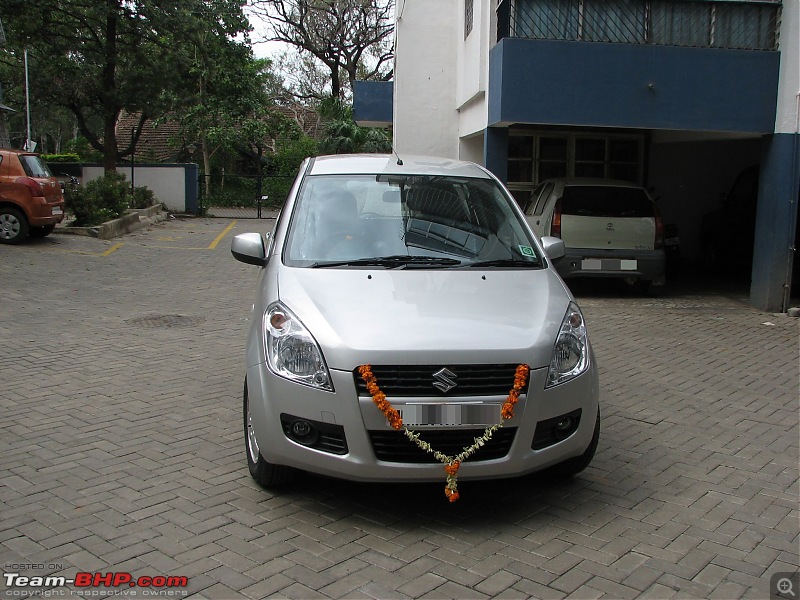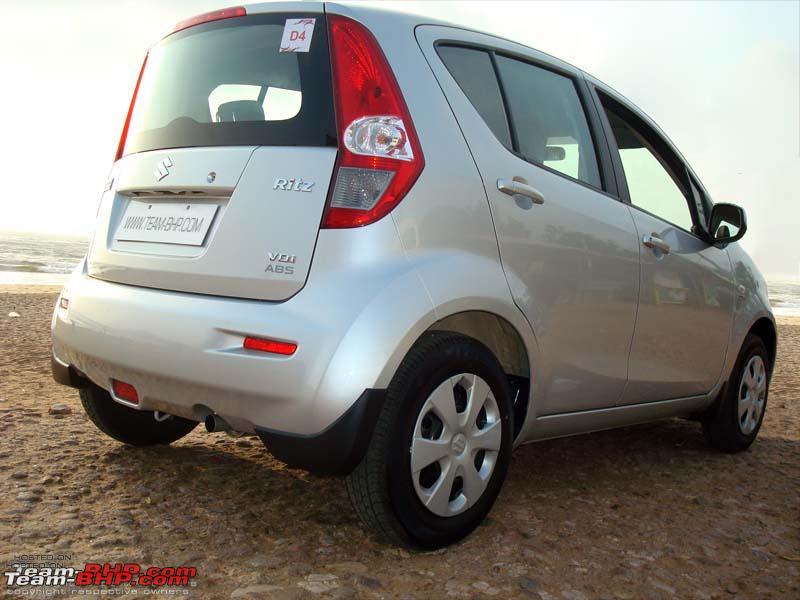

Dad had booked the Ritz Zxi some weeks back and it finally arrived. Here's the story.
Chronology:
Wednesday (Aug 5): Got a call from the Maruti dealer that our car has arrived in the stockyard. I had already told him that I want to do a pre registration inspection so I will need to see that car *before* he sends it for registration to the RTO.
He had already given us the engine and chassis number as soon as he was informed of dispatch by Maruti so I thought that was a plus on his side and there would be minimal chances of trying a switcheroo on us. And since Ritz is a new model there would be very less chances of getting an older model (Also I knew the dispatch date).
He said that we had 2 options - either we could go to the stockyard or he would get the car to the showroom anyway so we could see it there.
We opted for the second option since the stockyard is very far away.
Thursday (Aug 6): Went to the dealer and saw our car standing there. Did a thorough visual inspection plus checked the engine and chassis number as well as most of the points mentioned in the pre reg inspection thread on team-BHP.
The odometer was connected and showed 27 KM which I thought was pretty reasonable since the stockyard is at least 20 km away.
I had seen on one of the threads that some chap got a non alloy 5th wheel with his Zxi, so I made sure to check the spare as well.
Talked with the sales guy and he said that the car would be registered the next day and we could pick it up by evening if we wanted to. I told him that I want to do a thorough inspection and would like to take delivery in the morning. He agreed to that.
Saturday (Aug 8): Went in the morning at around 11 o clock with family. Did the paperwork in terms of getting the insurance note, receipts etc.
The sales person called a maintenance supervisor over to give us a demo. It was fairly detailed and covered most of the points in the PDI checklist. I covered the remaining points on my own and noticed a small scratch on the rear bumper which he promised to take care of. Rest everything seemed ok. Note the stress on "seemed"!
After the photo session we took the car and filled in 5 litres petrol for which they had given a coupon.
I had decided to change the stock tyres from the existing JK tyres to Michelin XM1+ (Thanks to Nikhilb2008 for his help and advice). So off I went directly to the tyre shop.
Imagine my consternation when I saw that one of the tyre rims was slightly bent!!
And this despite my so called inspection!!
So I obviously didnt upgrade that tyre and instead kept it aside and showed it immediately to the Maruti dealer. He agreed that it looked like a manufacturing defect and asked me to come with the tyre on monday and get it replaced.
Now for the driving experience:
After driving a WagonR for almost 10 years and 800s before that, this car feels very different. As many have attested, the engine is super smooth and quiet and peppy as well.
Things I liked:
1. Feeling of space in the cabin
2. Engine smoothness. As Ada mentioned in his review, one needs to look at the tachometer to reassure oneself that the engine is indeed running
3. Have to really keep a light foot on the accelerator. Speeds of 80-90 kmph are reached effortlessly
4. The tyres are really good and inspire confidence while cornering (hmm or is this due to the Michelins?)
5. The gearshift is good and each gear falls into place properly. Only reverse seems a bit stubborn at times.
6. Driving position is very comfortable and the height adjustment lever is a boon.
7. The steering to handles well and isnt as light as some other cars. It does allow you to feel the road and hence feel more in control.
8. Quality of stock ICE is average but it didnt have any trouble playing a number of MP3 CDs I had burnt.
9. The looks are suprisingly appealing and even the rear which is everyone's favourite bugbear looks much better in real life than in photos and it has started growing on me already.
Things that could have been better:
1. Clutch seems a bit hard and has a lot of play. Might be a problem with just my car. Can other Ritz owners please provide feedback.
2. I dont know if its the ABS or something else, but braking occasionally produces a kind of groaning noise.
3. The headlights are a big let down. Though the front and rear fog lamps are a plus.
4. Where's the engine temperature gauge???
5. I would have preferred a regular fuel gauge than the digital one
6. The boot space or rather the lack of it (yeah I know, and I want the moon too!!)
Overall its a very good car and well worth the money spent. I think Maruti has a winner on its hands. Now time will tell whether it ages gracefully or develops issues (read rattles and squeaks)
One interesting thing I learnt from the sales person was that its the Petrol top end model which is more in demand than the Diesel variant.
Next steps:
Accessorize, Accessorize, Accessorize: I just got the rubber mats and mud flaps from the dealer.
Follow up with Maruti dealer to get the tyre replaced
Follow up with Maruti dealer to get the scratch touched up or bumper replaced
Check out the FE
Oops. I missed the color - Its "Silky Silver" as dreamt up by the Maruti marketing Guys!
Will post some photos soon.












